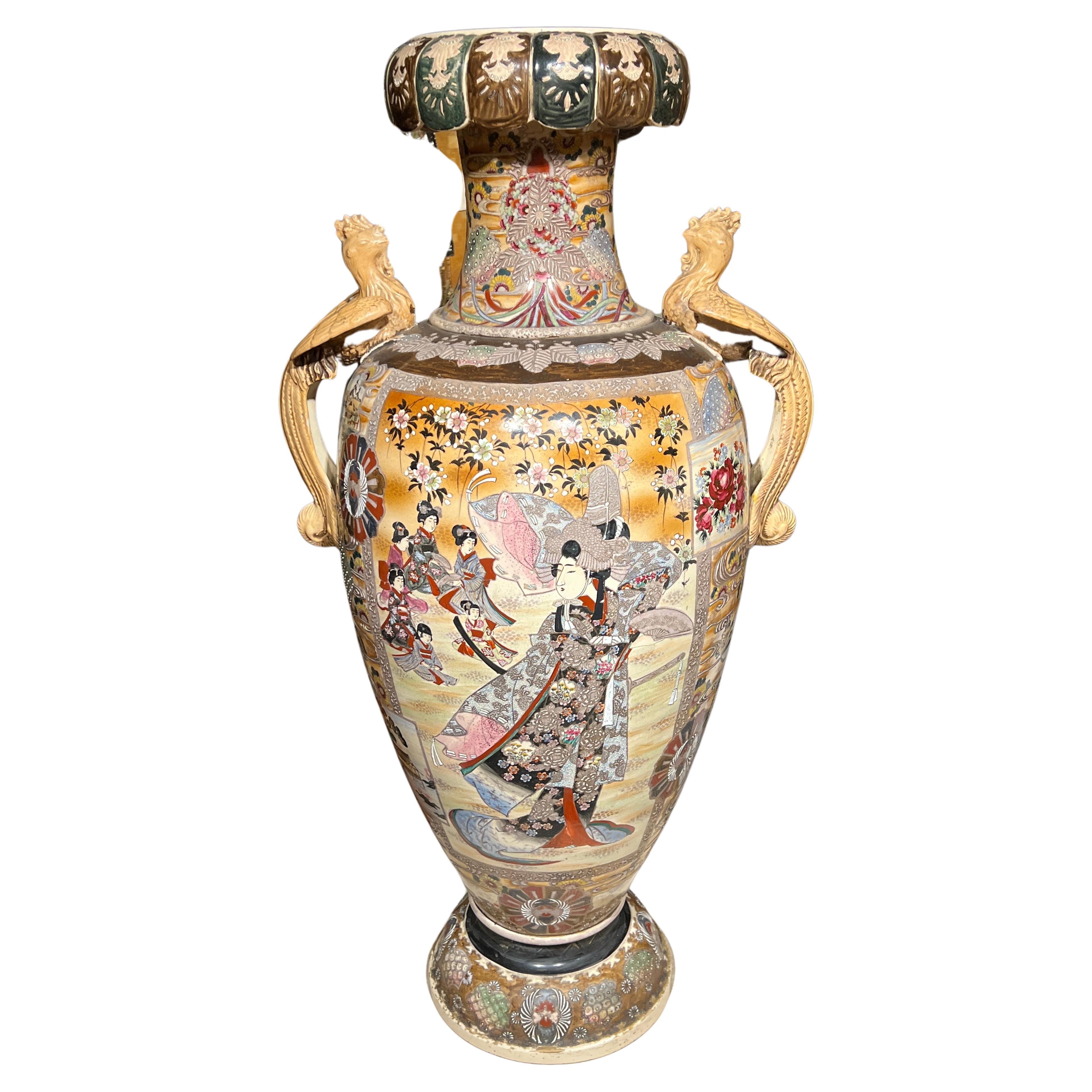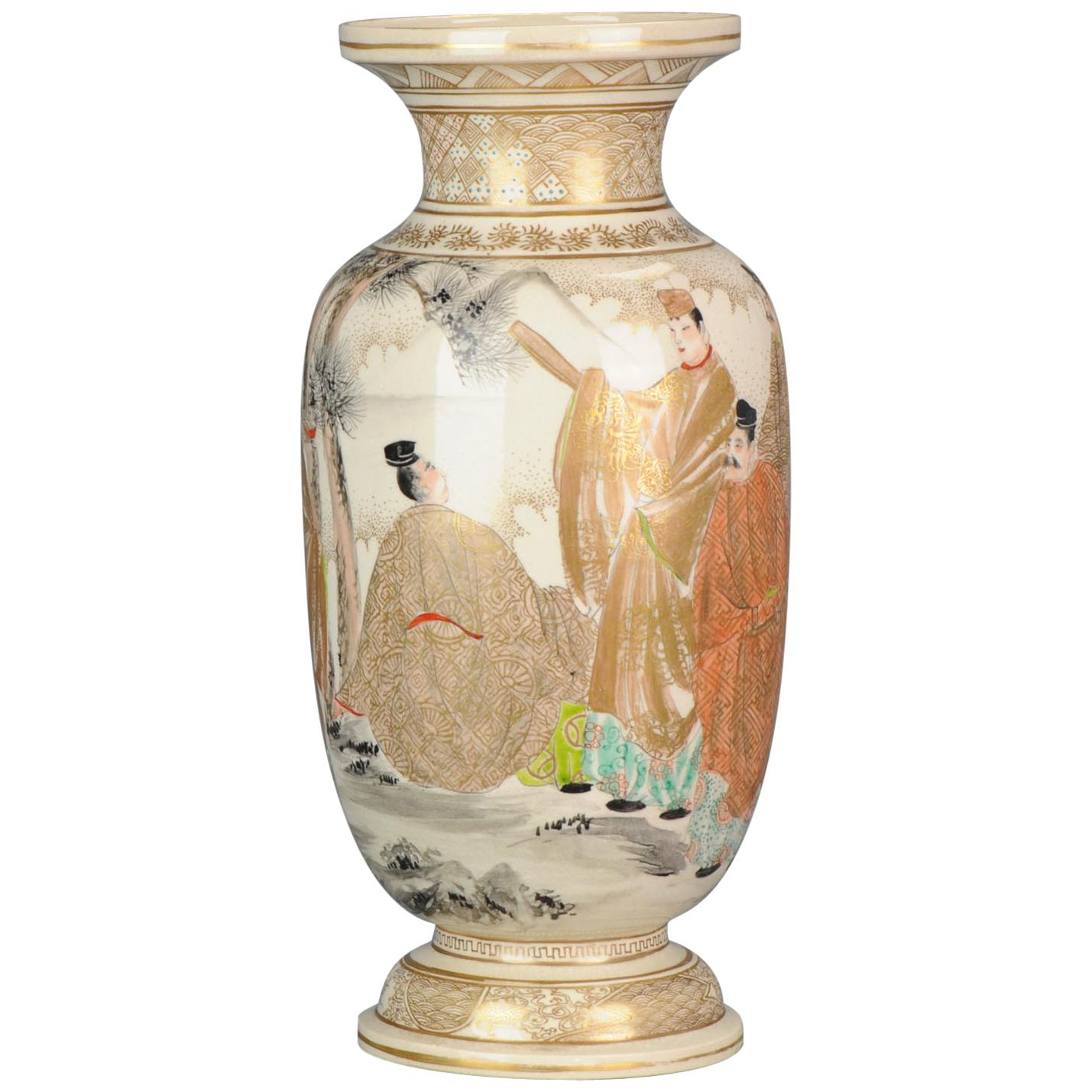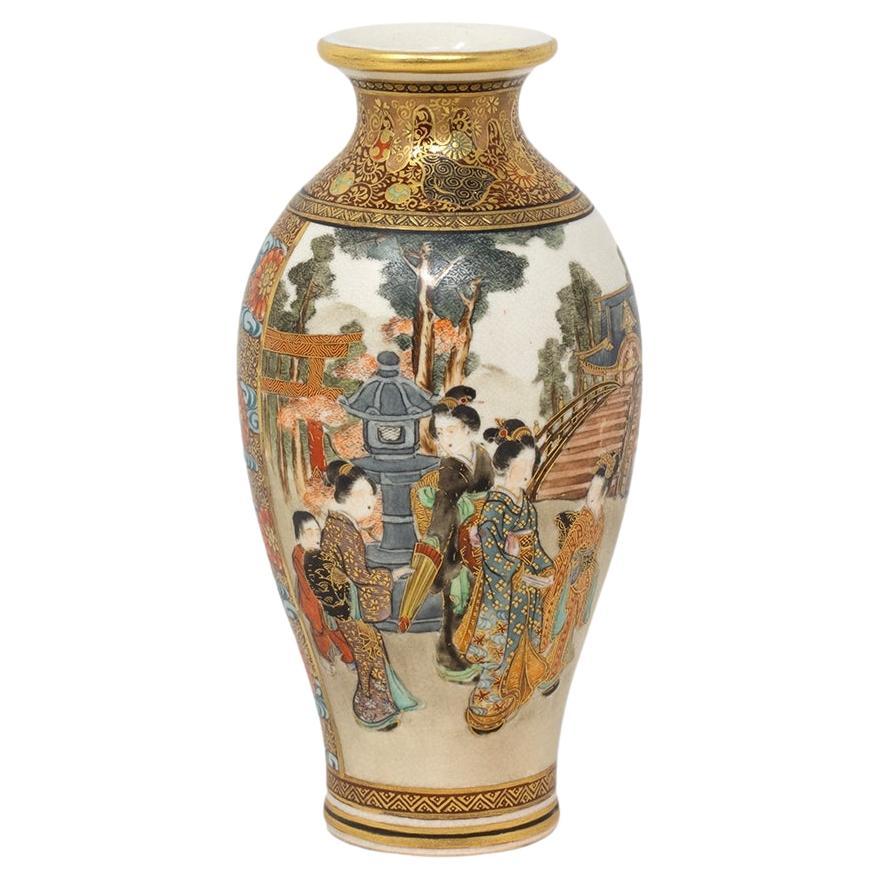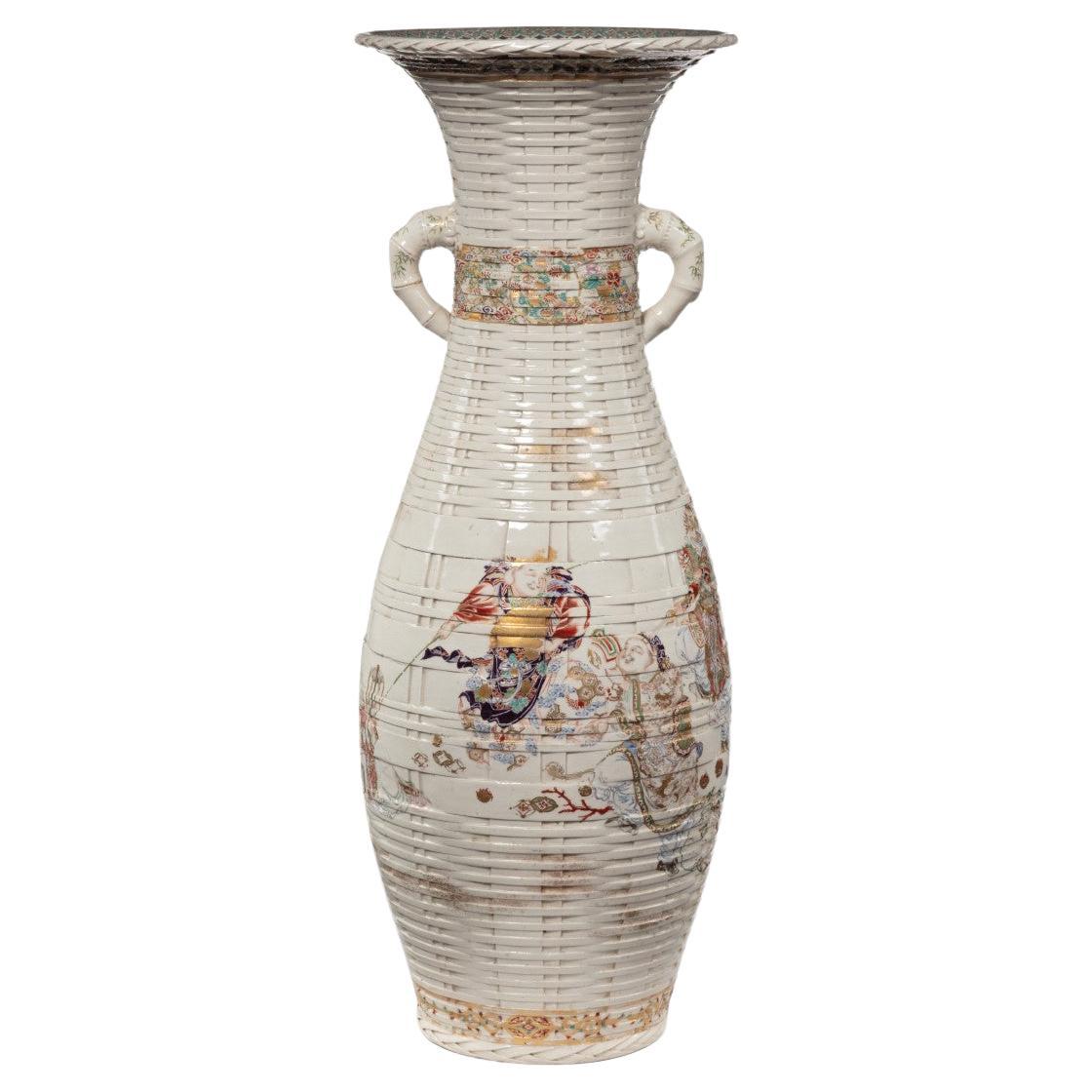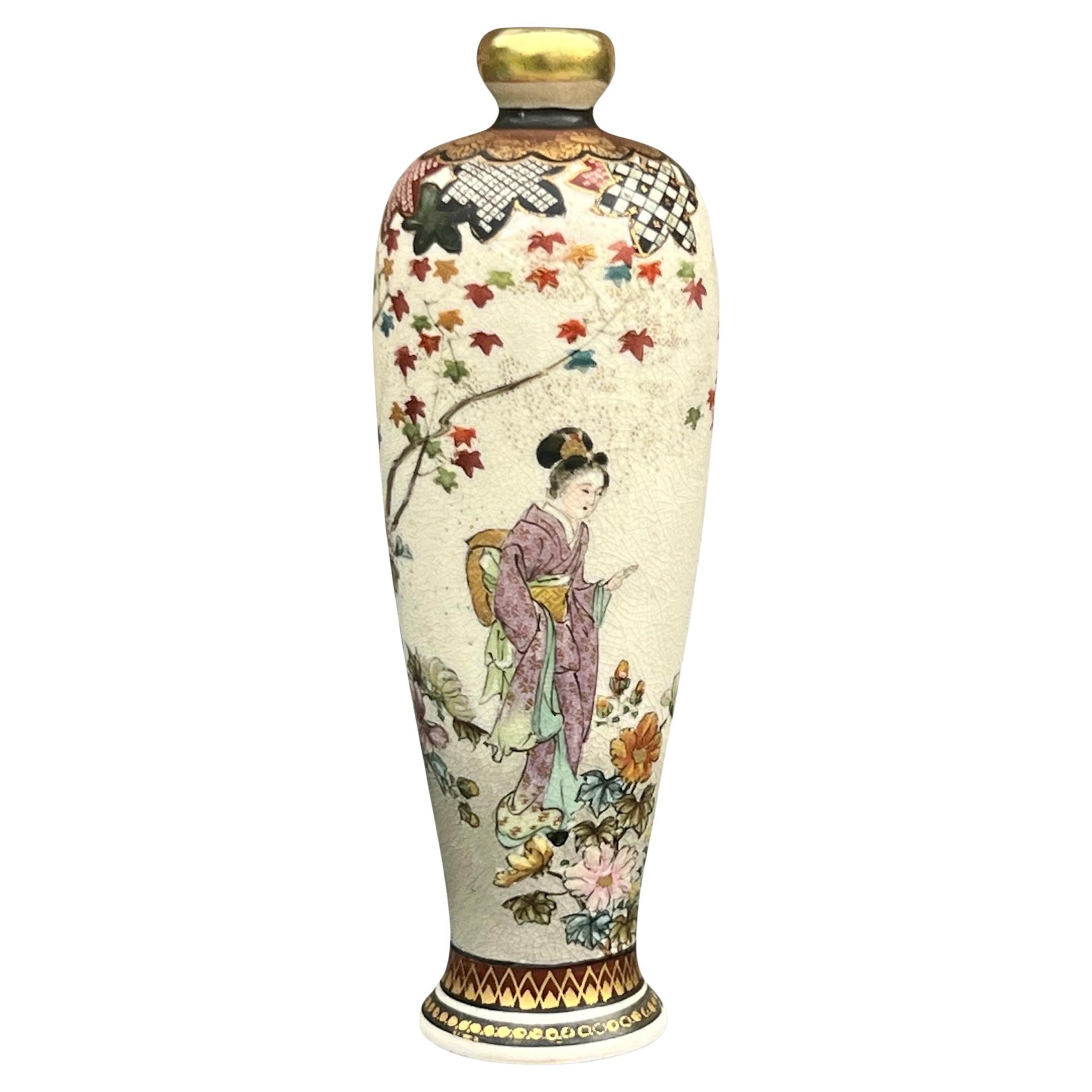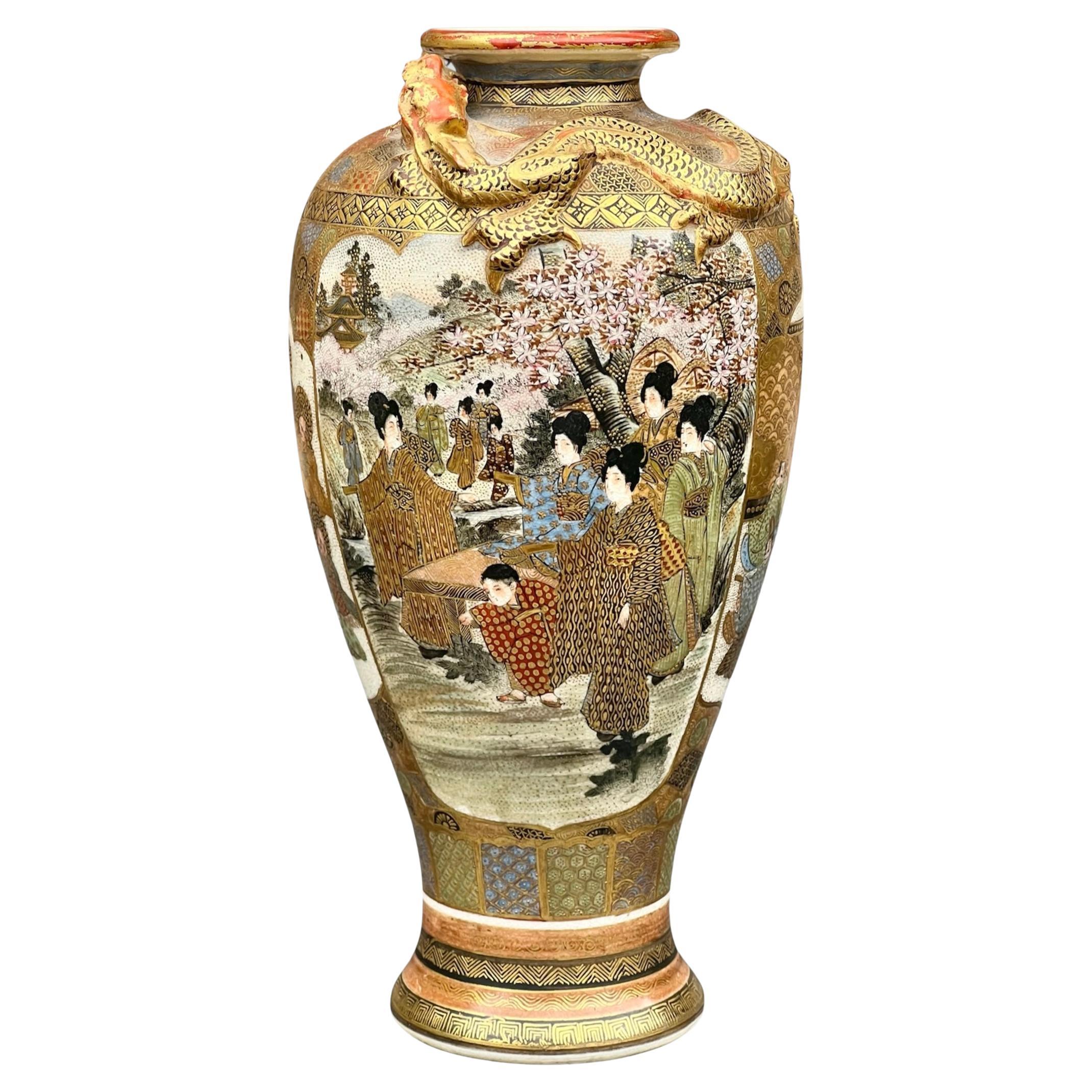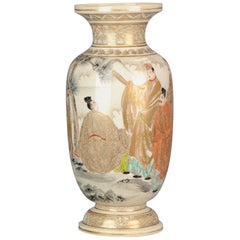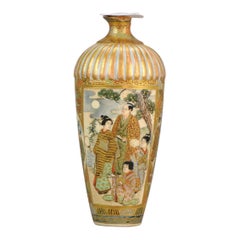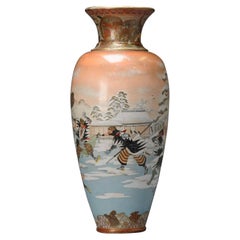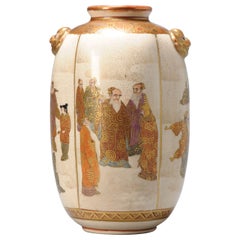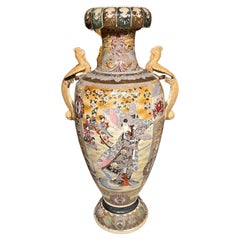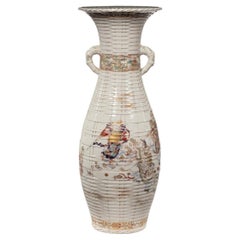Items Similar to Large Antique Meiji period Japanese Satsuma Pied de Stal Vase holder
Want more images or videos?
Request additional images or videos from the seller
1 of 12
Large Antique Meiji period Japanese Satsuma Pied de Stal Vase holder
$3,402.58
$4,253.2320% Off
£2,550.45
£3,188.0620% Off
€2,880
€3,60020% Off
CA$4,674.57
CA$5,843.2120% Off
A$5,218.72
A$6,523.4020% Off
CHF 2,734.53
CHF 3,418.1620% Off
MX$63,882.25
MX$79,852.8120% Off
NOK 34,728.56
NOK 43,410.7020% Off
SEK 32,744.63
SEK 40,930.7820% Off
DKK 21,923.61
DKK 27,404.5120% Off
Shipping
Retrieving quote...The 1stDibs Promise:
Authenticity Guarantee,
Money-Back Guarantee,
24-Hour Cancellation
About the Item
Lovely and rare piece.
A superb blue and white porcelain Dish bowl, with a leaf pattern. Made by Fuji Shumei
Fujii Mr. Aki Fujii's specialty is the technique of drawing a mountain by simulating the veins of a leaf, called the “leaf technique”, as if it were a complex tree branch.
When young leaves such as magnolia are pressed against unglazed pottery like Japanese paper dyeing and bleeding Kuresu, the veins of the leaves emerge as dark lines, and the mountains are drawn by arranging them.
This technique is used to capture the characteristics of the season, and the Arita landscape itself, which I imagined in my mind, is depicted in the work.
Mr. Akiaki Fujii has won many prizes including the Japan Ceramic Art Exhibition and the Kyushu Yamaguchi Ceramics Exhibition Minister of Education Award.
Period
20th century
A pot with dyeing the towering mountains was painted in front of me. If you look closely with your face close, you can see that even the branches of the tree are growing densely. The distant mountains are pale and small. On the other hand, the nearby mountains are drawn thick and large, and I realize that each tree is in the shape of a leaf. Dr. Aki Fujii is synonymous with this "tree leaf technique," which draws a mountain with veins resembling complex tree branches.
When young leaves such as magnolia are pressed against unglazed pottery like Japanese paper dyeing to let gosu bleed, the veins emerge as dark lines, and mountains are formed by lining them up. Mr. Fujii explains, "The mountain is the best way to make the best use of the shape of the leaves. What I draw is the Arita landscape itself that I imagined in my mind." The origin of this style was the leaf of a single tree, which was found only during the walk.
Mr. Fujii, who is also familiar with the bones, said, "In the Meiji era, roasted plates made of wax were made, but these are so-called handmade products. Spare no effort It is said that it takes one to two days to draw a mountain on one vessel.
The Fujii family is a family lineage that has been involved in pottery for generations, such as being allowed to use the family name sword as a pottery kiln during the Edo period. Mr. Fujii's pottery career begins with a 15-year-old painting apprentice. In his twenties, while working for a local ceramics manufacturer, he challenged to exhibit at Nikko. He became independent as a painting craftsman the year after he won the first prize, and opened the kiln 10 years later.
During this time, he has been working on various techniques, including the "cotton thread technique," which involves spraying soil that has been melted with water onto unglazed wrapping yarn to remove the thread and create a three-dimensional effect. At the time of the Boom in Komari, there were times when products that could sell were made more and more, which strengthened the IDEA that “business and art are different things”. I still have the anxiety that "good-looking products sell well, and really good works don't sell well. That's a pain."
After receiving the Prefecture Art and Cultural Achievement Award six years ago, Mr. Fujii has refrained from exhibiting activities such as exhibitions and solo exhibitions at pottery exhibitions for health reasons. On behalf of them, the eldest son, Tsuyoshi (31), is developing an active creative activity using blue-white porcelain. He looks to his successor, who pursues his way with a style different from his father's.
Mr. Fujii himself said, "I think I can make another expression with Konoha technique. I want to open a hole in Arita who is somehow stuck", and he is eager to go outside again.
Condition
Perfect. 450x72mm Diameter x Height
Period
20th century Showa Periode (1926-1989).
- Dimensions:Height: 16.93 in (43 cm)Diameter: 7.09 in (18 cm)
- Style:Qing (Of the Period)
- Materials and Techniques:
- Place of Origin:
- Period:
- Date of Manufacture:20th Century
- Condition:Wear consistent with age and use. Minor losses.
- Seller Location:Amsterdam, NL
- Reference Number:1stDibs: LU4863233746982
About the Seller
5.0
Platinum Seller
Premium sellers with a 4.7+ rating and 24-hour response times
Established in 2015
1stDibs seller since 2019
264 sales on 1stDibs
Typical response time: 2 hours
- ShippingRetrieving quote...Shipping from: Amsterdam, Netherlands
- Return Policy
Authenticity Guarantee
In the unlikely event there’s an issue with an item’s authenticity, contact us within 1 year for a full refund. DetailsMoney-Back Guarantee
If your item is not as described, is damaged in transit, or does not arrive, contact us within 7 days for a full refund. Details24-Hour Cancellation
You have a 24-hour grace period in which to reconsider your purchase, with no questions asked.Vetted Professional Sellers
Our world-class sellers must adhere to strict standards for service and quality, maintaining the integrity of our listings.Price-Match Guarantee
If you find that a seller listed the same item for a lower price elsewhere, we’ll match it.Trusted Global Delivery
Our best-in-class carrier network provides specialized shipping options worldwide, including custom delivery.More From This Seller
View AllAntique 19th Century Japanese Satsuma Vase Richly Decorated Marked Base Japan
Located in Amsterdam, Noord Holland
Lovely etailed piece. Marked on base with makers mark and mon crest
Condition
Overall condition perfect. Size: 294mm
Period
Meiji Periode (1867-1912).
Category
Antique 19th Century Japanese Meiji Ceramics
Materials
Earthenware
$850 Sale Price
20% Off
Antique Japanese Satsuma Vase Decorated Marked Base Japan, 19th Century
Located in Amsterdam, Noord Holland
Antique Japanese Satsuma Vase Decorated Marked Base Japan, 19th Century
Lovely detailed piece. Marked on base.
Additional information:
Material: Porcelain & Pottery
Type: Vase
Japa...
Category
Antique 19th Century Japanese Vases
Materials
Porcelain
$565 Sale Price
20% Off
Large Antique Meiji Period Japanese Satsuma Vase with Mark Japan, 19th Cen
Located in Amsterdam, Noord Holland
Faboulous japanese earthenware vase of larger size. Lovely and amazing winter village scene of warriors who seem to be practicing. Mark at th...
Category
Antique 19th Century Japanese Vases
Materials
Porcelain
$2,150 Sale Price
20% Off
Antique Nicely Shaped Meiji Period Japanese Satsuma Vase with Mark Satsuma
Located in Amsterdam, Noord Holland
Fabulous japanese earthenware Satsuma Vase of great shape and scene. With animal head 'handles'
Marked: Satsuma
Additional information:
Material: Porcelain & Pottery
Japanese Style...
Category
Antique 19th Century Japanese Vases
Materials
Porcelain
$1,038 Sale Price
20% Off
Large Antique 19-20th C Japanese Satsuma Vase Japan Meiji Period Landscape
Located in Amsterdam, Noord Holland
Fabulous Satsuma vase with a circular mountainious landscape scene with a bridge and ladies in a pagode garden.
Condition
Overall condition some spots of enamel loss on the body,...
Category
Antique 19th Century Japanese Meiji Ceramics
Materials
Earthenware
$756 Sale Price
20% Off
Large Antique 19C Japanese Kutani Vase Marked on Base Birds Swallows Gar
Located in Amsterdam, Noord Holland
Very lovely piece. With mark at base.
Condition:
Overall condition crackle lines on body. Size: 335mm high, upper rim 115mm
Period:
Meiji Periode, (1867-1912).
Category
Antique 19th Century Japanese Meiji Ceramics
Materials
Porcelain
$897 Sale Price
20% Off
You May Also Like
Very Fine quality Monumental meiji period Japanese Satsuma Vase
Located in New York, NY
A very fine quality monumental Japanese vase depicting Samurai on one side and distinguished female and her attendants on reverse, particularly unique for its very prominent stylized...
Category
Antique Late 19th Century Japanese Ceramics
Materials
Porcelain
Japanese Meiji Period Satsuma Vase by Ryokuzan
Located in Newark, England
From our Japanese Satsuma Collection, we are delighted to offer this Japanese Satsuma Vase by Ryokuzan 緑山. The Satsuma vase of ovoid shape with a tapered body, circular foot rim, wai...
Category
Antique Early 1900s Japanese Meiji Ceramics
Materials
Ceramic, Earthenware, Pottery
Large Meiji Period Satsuma Earthenware Floor Vase
Located in Lymington, Hampshire
A large Meiji period Satsuma earthenware floor vase, the skittle shaped body painted in pastel overglaze enamels and gilding with a continuous frieze of the Seven Gods...
Category
Antique 1870s Japanese Meiji Ceramics
Materials
Enamel
A Fine Japanese Satsuma vase signed by Ryokuzan. Meiji period
Located in London, GB
A exquisite Satsuma vase signed by Ryokuzan.
Meiji Era.
Of a slender ovoid shape featuring intricate hand-painted designs and delicate gilded accents.
The vase is adorned with...
Category
Antique 19th Century Japanese Ceramics
Materials
Ceramic, Porcelain
A Fine Japanese Satsuma Vase Signed Ryuzan, Meiji Period
Located in London, GB
A Fine Japanese Satsuma Vase
Signed Ryuzan, Meiji Period
Of baluster form, the shoulder and neck adorned with a finely modeled dragon in high relief, The surface is decorated in v...
Category
Antique 19th Century Javanese Ceramics
Materials
Ceramic
Large Meiji Period Satsuma Earthenware Floor Vase
Located in Lymington, Hampshire
A large Meiji period Satsuma earthenware floor vase, the of baluster form, painted in pastel overglaze enamels and gilding with two large sprays of flowers including prunus blossom, ...
Category
Antique 1870s Japanese Meiji Ceramics
Materials
Enamel
More Ways To Browse
Japanese Sword Furniture
Vintage Yarn Art
Hand Painted Large Pots
Meiji Porcelain Satsuma
White Handmade Ceramics And Pottery
Japanese Ceramic Pot
Asian Sword
Thread Holder
Meiji Period Bowl
Japanese Satsuma Pottery
Vintage Japanese Hand Painted Vase
Vintage Art Pottery Dish
Brown Japanese Ceramic Bowl
Large Japanese Pot
Qing Pots
Satsuma Style
Japanese Porcelain Pot
Japanese 20th Century Blue White Vase
